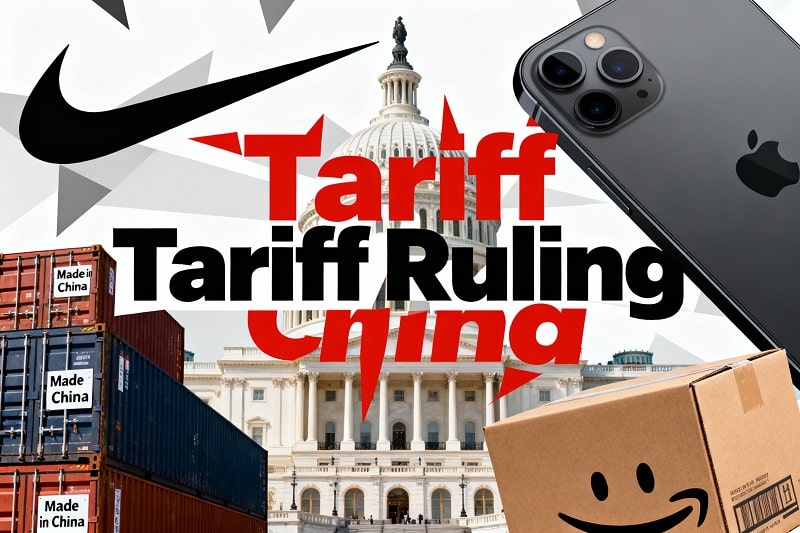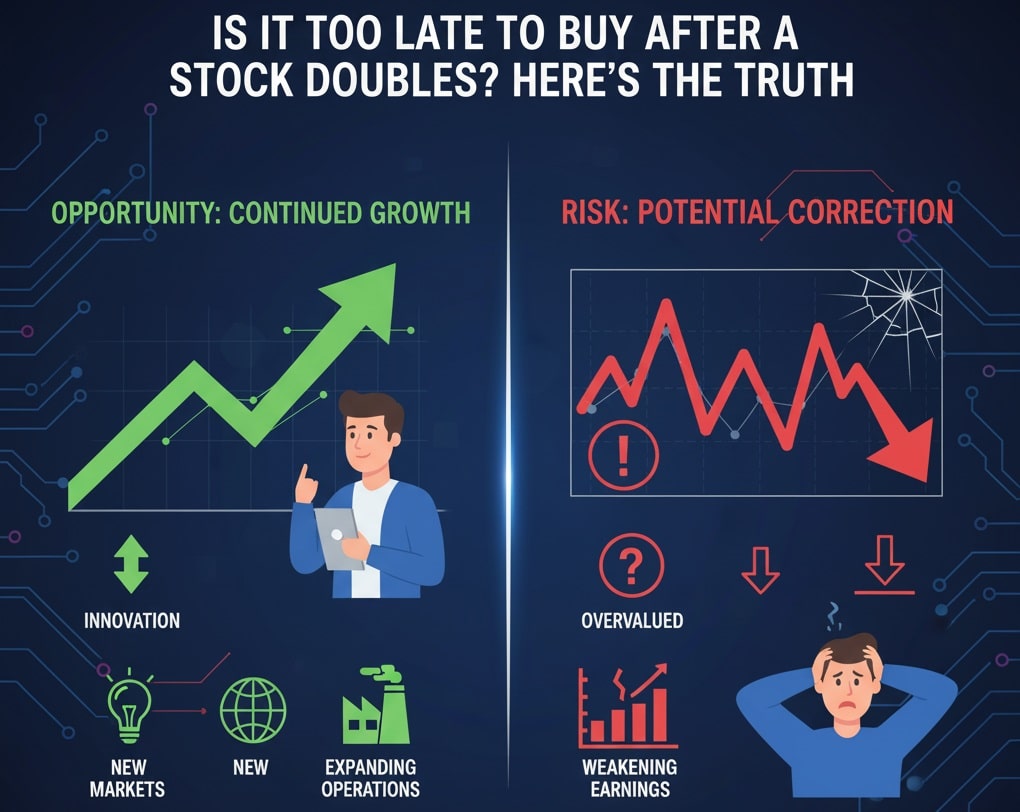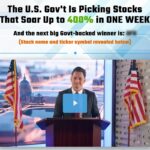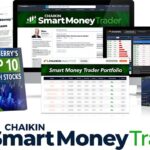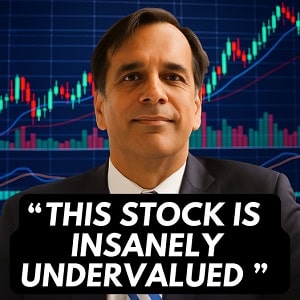Every few years, Wall Street faces a catalyst big enough to shift entire sectors, rewrite earnings forecasts, and force investors to rethink their playbooks overnight. In 2025, all eyes are on the U.S. Supreme Court as it weighs the fate of Trump-era tariffs—rules that have shaped global supply chains, corporate profits, and consumer prices for years. Whether you’re a seasoned trader or a long-term investor, understanding how this historic ruling could reshape the markets is the edge you need to seize new opportunities and avoid costly pitfalls.
Why the Supreme Court Tariff Case Matters for Investors
A landmark Supreme Court case is poised to reshape the investing landscape, with reverberations felt across retail aisles, tech factories, auto lots, and trading desks. At its core is the future of tariffs imposed by President Trump under the International Emergency Economic Powers Act (IEEPA)—a policy that changed the game for global business and market returns in recent years.
For investors, moments like these aren’t just political drama; they’re actionable market signals. Informed traders know that regulatory shifts can create instant winners and losers, moving tickers for weeks, or even months, after the news hits. The Court’s decision, whether it axes existing tariffs or tempers executive authority, won’t just be front-page fodder—it’ll be a playbook for anyone watching margins, supply chains, and sector leadership.
This guide unlocks that playbook. Drawing on historical trade policy reactions, performance charts, and current market setups, we’ll reveal the stocks best positioned for upside if tariffs drop, as well as those most exposed if import protection vanishes. Read on to align your portfolio ahead of Wall Street’s next major rotation.
Unpacking the Trump Tariff Strategy and IEEPA Impact
Trump’s tariffs were billed as a bold move to restore America’s manufacturing might, shielding producers from foreign pressure and encouraging domestic investment. Using IEEPA, the White House levied duties on sectors ranging from consumer goods and autos to semiconductors and energy supplies.
But the impact tilted markets two ways:
-
Import-heavy industries endured margin pressure and stock price headwinds, with global supply chains facing an “America-first” reckoning.
-
Domestic producers—especially in steel, autos, and defense—saw a rally as foreign competition became more expensive for U.S. buyers.
Those tariffs re-ordered sector leadership, rewrote earnings guidance, and fueled years of volatile price swings—making the Court’s next move a market-mover for both bulls and bears.
Market Winners: Stocks Set to Benefit from Tariff Rollback
A Supreme Court decision striking down or weakening Trump’s tariffs would provide immediate relief to import-reliant companies—many already tracked eagerly by analysts for outsized gains.
Retail and Consumer Brands
Nike (NKE), Gap (GPS), Wayfair (W), RH, Walmart (WMT), Home Depot (HD), YETI (YETI)
These businesses run on international sourcing, importing everything from apparel and furniture to home goods and outdoor gear. Tariffs dented profit margins and complicated supply chain planning. A rollback would:
-
Lower input and freight costs
-
Improve quarterly earnings visibility
-
Restore competitive pricing relative to foreign rivals
Expect quick repricing as Wall Street recalculates earnings models—especially for retailers that have lagged due to tariff-induced drag.
Tech Giants
Apple (AAPL), Tesla (TSLA), Meta (META), Amazon (AMZN), NVIDIA (NVDA)
Tech hardware is built on global supply chains. From semiconductors to finished phones, tariffs meant higher costs and supply interruptions. Striking down these barriers would:
-
Lower production and distribution cost basis
-
Enable more agile innovation cycles
-
Spur new highs as volumes and margins expand
Look for tech stalwarts to drive leadership in post-ruling rally, especially those that source at scale from tariff-affected regions.
EV and Battery Majors
Rivian (RIVN), Fluence Energy (FLNC), Albemarle (ALB)
As the world races to electrify transportation, rare earth and battery supply chains remain globally dependent. A tariff rollback would:
-
Lower component costs
-
Drive margin expansion in emerging vehicle markets
-
Reduce uncertainty for long-term capital projects
These stocks often trade with higher volatility—meaning, a Court-driven break could trigger sharp sector rotation.
Home Improvement and Big-Box Retail
Home Depot (HD), Walmart (WMT)
Often overlooked, these retailers stand to benefit from cheaper access to consumer electronics, home goods, and seasonal products sourced globally.
Market Losers: Tariff-Reversal Risks for American Producers
Not all stocks are poised to win; those that thrived under protectionism must now navigate renewed competition.
U.S. Steelmakers
Nucor (NUE), Alcoa (AA)
Tariffs created cost advantages for domestic metal producers. Their stocks rallied as foreign alternatives became pricier, but a reversal could pressure sales and pricing power.
Domestic Automakers
Ford (F), GM, PACCAR (PCAR)
American auto firms enjoyed shelter from overseas rivals due to imposed fees on imported vehicles and parts. Without tariffs, expect pricing wars and margin contraction.
Aerospace & Defense
Lockheed Martin (LMT), Northrop Grumman (NOC), Huntington Ingalls (HII)
Trump-era tariffs fueled a defense sector surge, but diminishing protectionism and changing global priorities could slow orders and political tailwinds.
Defensive Stocks
UnitedHealth (UNH), Humana (HUM), Copart (CPRT)
Safe havens may lag as capital rotates toward high-growth importers after tariffs unwind.
Case Studies: Historical Performance After Major Trade Rulings
When trade policies change, the stock market’s response is often swift and pronounced. Past examples offer investors a blueprint for what could unfold after the upcoming Supreme Court ruling:
-
2018 Section 301 Tariffs on China:
Retailers and tech hardware stocks experienced abrupt drawdowns as the cost of goods soared and earnings guidance missed targets. Conversely, steelmakers rallied until anticipated counter-tariffs and input cost hikes started eating away at their gains. -
2015 Lifting of Iran Sanctions:
Energy, shipping, and industrial stocks spiked sharply as new supply chains opened and cost-savings materialized. -
2002 Bush Steel Tariffs:
U.S. steel rallied sharply in the wake of tariffs, but left auto and consumer durables lagging. When the tariffs were repealed in 2003 after WTO pressure, steel stocks corrected and consumer goods rallied.
Key Lesson:
Sector rotations happen fast after trade rulings. Those who act early outperform—especially if they anticipate margin impacts and legislative momentum.
Technical Analysis: Price Patterns, Pre-Ruling Moves, and Sector Momentum
Before any major policy event, stocks often telegraph investor sentiment—if you know where to look.
Retail and Tech:
-
Many import-heavy winners began forming base patterns (double bottoms, consolidation zones) after months of underperformance.
-
Watch for breakouts above 50- and 200-day SMA as momentum shifts.
Steel and Autos:
-
Steelmakers show distribution (heavy volume on down days) while automakers exhibit gradual tops and resistance at multi-month highs.
-
A breakdown below support levels could trigger rapid declines if protection ends.
EV and Batteries:
-
These tickers are volatile but responsive to policy; RSI and MACD indicate which are oversold or have bullish crossovers right before legislative news.
Defensive Stocks:
-
Often hold steady or slightly lose ground as market rotates into cyclicals and high-beta names.
Options Strategies: Calls, LEAPS, and Protection
Major legal decisions create volatility, opportunity, and risk. Traders use options to manage all three.
-
Long Calls:
Bet on upside in import-heavy winners (NKE, AAPL, AMZN, WMT, RIVN) for short-term pops post-ruling. -
LEAPS:
Capture long-term appreciation with lower upfront risk, especially if rulings set a multi-year policy change. -
Protective Puts:
Use puts on at-risk steelmakers and automakers (NUE, AA, F, GM) to defend existing positions. -
Bear Spreads:
Anticipate sector declines by buying vertical or calendar spreads on tariff-reliant losers.
Pro Tip:
Plan trades early—dramatic moves can make options expensive right after rulings hit the tape.
Portfolio Tactics: Rotating for Tariff-Driven Momentum
-
Start with a sector scan:
Use ETF screens to track retail, tech, auto, and industrial volumes pre-ruling. -
Prioritize margin upside:
Target stocks with most potential for margin expansion after tariff removal. -
Trim exposure:
Reduce allocations to tariff-protected beneficiaries ahead of the Court’s announcement. -
Stagger entries:
Build positions in leaders as chart breakouts confirm momentum. Don’t chase parabolic moves—rotate and scale in as the trend solidifies. -
Balance for volatility:
Diversify across winners to avoid concentrated risk; use options and stop orders on losers to cap downside.
Key Takeaways
-
The Supreme Court’s ruling is a potential sector-reset: import-driven brands and innovation leaders are poised for faster margin growth, while protected industries must brace for renewed global competition.
-
Options and technical analysis give investors tools to profit and protect as the news breaks.
-
Early sector scans, staggered entries, and disciplined risk management are essential to navigating post-ruling volatility.
-
Historical precedent favors aggressive rotation—expect leaders to emerge quickly.
Conclusion: Positioning for Profits in Court-Driven Market Shifts
Major policy decisions don’t just fill headlines—they shape portfolios. The Supreme Court’s Trump tariff case stands to unlock new trends in retail, tech, automotive, and more, as import costs fall and competitive forces realign. Proactive investors have the tools: sector watchlists, technical setups, options plays, and strategic allocations.
Now is the time to go beyond the headlines. Research, scan, and rotate. Identify leaders in import-driven margins and stay vigilant on protectionist stocks that might stumble. With a disciplined approach, the coming ruling can be your next opportunity for upside.
Start watching, start rotating—make the Supreme Court decision your edge in a changing market.
Frequently Asked Questions (FAQ)
What sectors benefit most if Trump’s tariffs are repealed?
Retailers, tech hardware companies, EV and battery manufacturers, and global consumer brands—especially those with import-heavy supply chains—stand to gain most from lower costs and wider margins.
Which stocks are most at risk if protection drops?
U.S. steelmakers, select automakers, defense contractors, and some defensive sector stocks, as tariff advantages disappear and global competition heats up.
How quickly will the market react to the Supreme Court’s decision?
Historically, major tariff decisions produce overnight sector rotations, with the fastest moves occurring in the first few days post-announcement.
What’s the best way to play a pro-import winner?
Consider call options, LEAPS, or staged equity buys in retailers, tech, and consumer brands. Look for price breakouts and increased trading volumes for confirmation.
How can I manage risk in steel and auto stocks?
Tighten stop losses, use protective puts and bear spreads, and monitor technical breakdowns for early exit signals.
Should I invest before or after the ruling?
Early positioning can capture momentum, but diversification and risk management are key if the Court’s decision doesn’t match expectations.



